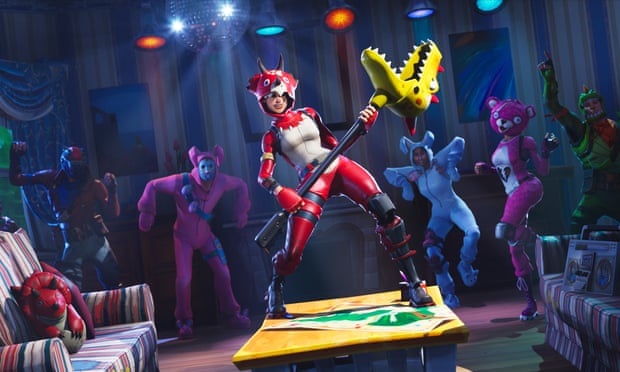Almost every video game is designed to make you want to play it. Fortnite, though, is especially good at keeping people coming back, week after week, match after match. This "stickiness", as game designers call it, is not down to some revolutionary new game design factor. Instead, Fornite has improved and repackaged ideas, creating an effective evolutionary step rather than a leap.
While improving shooting skills and chasing a Victory Royale is satisfying, what keeps Fortnite players engaged second-to-second is loot, the items and weapons that can be found all around the map. The random nature of these item-drops, in quality and location, leads to what is known in psychology as a variable-ratio schedule. A weapon or item that could bestow a significant advantage might always be right around the corner. The hope of finding something desirable paired with occasional reward is exciting to humans: you've probably experienced this from shopping sales, or fishing.
Fortnite, however, is unlike most games in that the player's loot is lost at the end of every match. The game's designers don't need to stretch out the content by offering rewards at longer intervals. Instead, Fortnite players get the excitement of receiving a great weapon or item in every single match.
However, when a heuristic fails and the player's character dies, they experience cognitive dissonance between what they thought was going to happen and what actually happened. For a Fortnite player, this may be because they were hit by a sniper in what they thought was a secret hiding spot.
It is imperative to reconcile this disconnect. If you stop playing Fortnite after a failure, you're cutting the feedback cycle at cognitive dissonance, rather than the reward of heuristic strengthening. That makes quitting it hard to do.
These principles apply during every play session. But what keeps people coming back for weeks on end is another powerful human desire: to signal social status. Every Fortnite match has an audience of 100 players to impress. You can play or pay for "skins", visual customisations that apply to either a player's avatar or their weapon, making your character look like a samurai or turning your pickaxe into a balloon sculpture. Socially, skins work much in the same way as a Louis Vuitton handbag does at signalling success, because highly desirable skins require intensive play (and real-world money) to obtain.

No comments:
Post a Comment